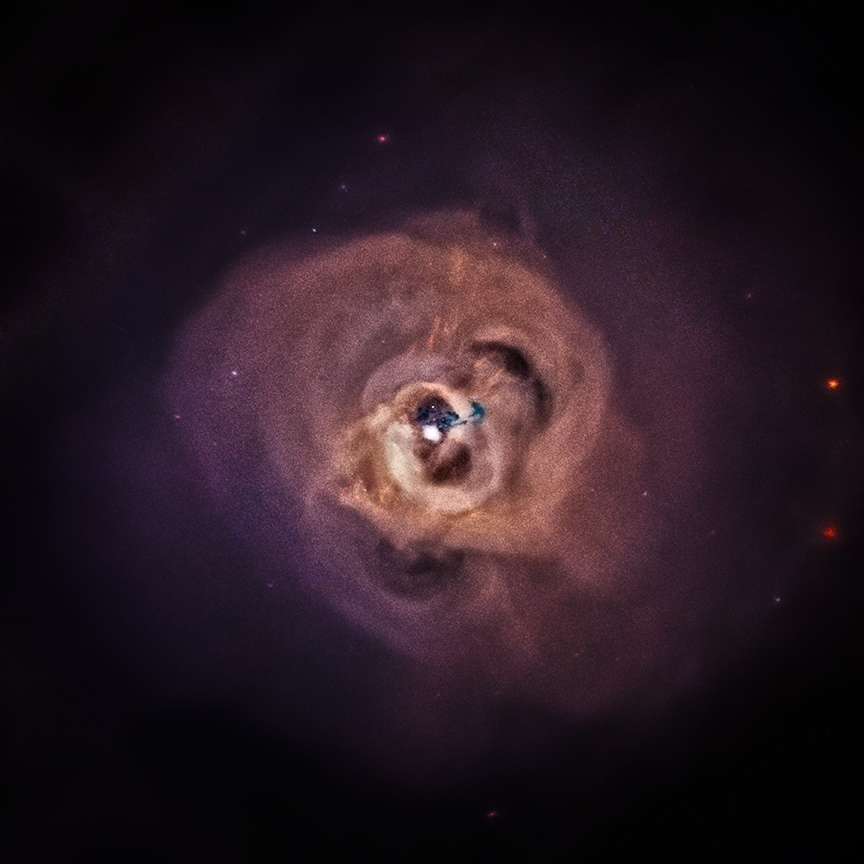
 Credit: NASA/CXC/SAO/E.Bulbul, et al.
Credit: NASA/CXC/SAO/E.Bulbul, et al.
The Loss of Hitomi
At 3:01 a.m. Japan time on March 26, 2016, the astronomical community suffered the tragic loss of the Hitomi X-ray Observatory. Hitomi, launched just five weeks earlier on February 17, was near the end of its on-orbit checkout and verification phase, and maneuvering from the Crab Nebula to an active galaxy, Markarian 205, when, through a series of problems, it could no longer determine its accurate orientation in space. Efforts to correct these problems actually made them worse, eventually spinning the satellite beyond its limits. This fast rotation caused a partial breakup of the satellite, and the loss of the extendable optical bench and the Hard X-ray Imager instrument, along with the spacecraft's solar panels. There was hope that commands from ground could counteract the rotation and lead to a partial recovery of the mission, but the loss of the solar panels, needed to provide spacecraft power, made this impossible. On 28 April, the Japan Aerospace Exploration Agency (JAXA) declared the satellite lost.
Hitomi carried a number of cutting-edge instruments aboard. The most highly anticipated instrument was the Soft X-ray Spectrometer, an X-ray calorimeter, which produces especially high-resolution X-ray spectra by measuring tiny increases in temperature when a special material, kept near absolute zero, absorbs an individual X-ray photon. Hitomi was the third attempt to fly an X-ray calorimeter in space: sadly, the two previous attempts also ended tragically. Before Hitomi was lost, however, the SXS did obtain an early observation of X-ray emission from the Perseus Cluster of galaxies (shown above in an X-ray image by the Chandra X-ray Observatory), and this single observation produced spectra which astronomers believe will transform our understanding of how supermassive black holes, dark matter, and stellar explosions help to enrich the Universe.
Published: May 2, 2016
<
HEA Dictionary ● Archive
● Search HEAPOW
● Other Languages
● HEAPOW on Facebook
● Download all Images
● Education ● HEAD
>

Each week the HEASARC
brings you new, exciting and beautiful images from X-ray and Gamma ray
astronomy. Check back each week and be sure to check out the HEAPOW archive!
Page Author: Dr. Michael F. Corcoran
Last modified Tuesday, 27-Feb-2024 10:13:25 EST


